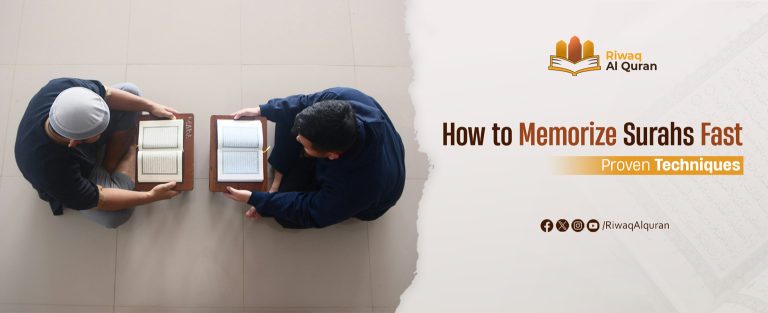The Taraweeh prayer is a cherished practice during the holy month of Ramadan, celebrated by the Muslim community across all countries by praying in congregation in the nearest or well-known mosques.
This remarkable prayer can be performed at home or in a mosque congregation. Its performance aims to improve your spiritual experience, provide a special chance to reflect, ask for forgiveness, and get closer to Allah.
Read on to unlock any missed point about the Taraweeh prayer you need to know!
Table of Contents
What Is Taraweeh Prayer?
Taraweeh, which means rest or relaxation, is a voluntary prayer and highly recommended sunnah conducted every night during Ramadan after the Isha prayer.
A lot of people desire this special prayer in order to gain its great rewards and ask for forgiveness from Allah in this holy month.
Mosques throughout the world offer communal Taraweeh prayer for men and women every night of this auspicious month.
Abu Hurairah (May Allah be pleased with him) reported:
The Messenger of Allah (PBUH) said,
“He who observes optional prayer (Tarawih prayers) throughout Ramadan, out of the sincerity of Faith and in the hope of earning reward will have his past sins pardoned”.
How Many Rakat In Taraweeh?
Taraweeh prayer is performed in sets of 2 rakats, and its range varies between 8 to 20 rak’ahs.
Is The Taraweeh Prayer 8 Or 20 Rakats?
Certain narrations agreed that the minimum offered number of the Taraweeh prayer is 4 to 6 rakats, and the maximum is 20 rak’ahs. However, it is common for people to pray between 4, 6, 8, and 13 rak’ahs.
Is Taraweeh Compulsory?
Tarawih prayers are considered a highly recommended Sunnah, which refers to its not obligatory prayer. So, there’s no sin on any Muslim in case he doesn’t execute it.
Can You Pray Taraweeh At Home?
You can pray Taraweeh at home, alone, or in a congregation with family and friends. So it’s completely permissible.
Did The Prophet Pray Taraweeh?
Yes, he did. The prophet Muhammad led the Taraweeh prayers in congregations during Ramadan many times. However, he stopped this practice because he was worried it might become mandatory (fard).
After that, Omar ibn el Khattab brought back the communal prayer of Taraweeh during his time as the caliphate.


When Is Tarawih Prayer Time?
Taraaweeh prayer is valid at any time as it is performed from after the ‘Isha’ prayer till dawn.
In another narration, Taraweeh prayer is said at any time after the obligatory Isha prayer but before Witr, since Witr is the final prayer of the night.
How To Perform Taraweeh Prayer?
Whether you are looking to know how to pray Taraweeh at home or in the mosque, these following steps will guide you to master everything related to Taraweeh prayer:
1. Prepare For The Taraweeh Prayer
Taraweeh is a particular prayer that can only be offered during Ramadan, therefore it begins by having the appropriate mindset.
To know What are the rules for Taraweeh prayer? Follow the instructions provided to ensure that you are fully prepared for these numerous prayers:
- Decide How Many Rak’ahs You Will Offer
As an encouragement step, challenge yourself with every Ramadan to raise up the number of rakats you usually do. As many rak’ahs as you are able to, sit your Niyyat to pray the Taraweeh.
- State your intention Of Taraweeh
Consider your reasons for performing the Taraweeh prayer: to become closer to Allah, to focus on the Quran, and to gain the spiritual rewards of the holy month of Ramadan.
- Ensure The Purity (Do Ablution)
Ensure you are in a state of Wudu or renew it for more rewards. Check the guide below for more details:
Wudu Steps: How To Perform Wudu?
- Choose Taraweeh Prayer Location
If you choose to pray Taraweeh at home, pick a comfortable spot (from your opinion) and furnish it with suitable items that help you focus during the Taraweeh prayer.
This includes your prayer rug, Mushaf, prayer beads (Misbaha), and some water and fresh fruits to nourish yourself during breaks between salah.
2. How To Pray Taraweeh In Mosque?
It is necessary to follow the imam at every step when praying at a mosque. Here is a summary of the procedures for Taraweeh prayers:
- Face The Qibla
Whether you are at home or in a mosque, make sure to rotate yourself towards Mecca direction. This is a compulsory requirement to do!
- Start The First Raka’h And Spell Out The Opening Takbir
Start your salah by saying “Allahu Akbar” (Allah is the Greatest).
- Recite Surah Al-Fatihah and another passage From The Quran
You should silently follow along with the imam in the reading of Surah Al-Fatihah and what he additionally reads from the Quran passages. You can also open the Mushaf to go with the imam’s reading.
You have the option to remain silent and simply listen to the Imam reciting the Quran, reflecting on the meaning of each Ayah.
- Go Into Ruku (Bowing Position)
Say “Allahu Akbar ” and bend down, chant “Subhana Rabbiya Al Adheem” (Glory be to my Lord, the Most Great) three times silently.
- Back To I’tidal From Ruku
Rise your body again, stand up straight while saying “Sami’Allahu liman hamidah” (Allah hears those who praise Him), fold your hands over your chest (the right one on the top), and say “Rabbana lakal hamd” (Our Lord, to You belongs all praise) in audible voice, but for your own hearing only.
- Perform The First Sujood (Prostration)
Call “Allahu Akbar” to go into prostration, then recite “Subhana Rabbiyal A’la” (Glory be to my Lord, the Most High) three times silently.
- Sitting Between The Two Sujoods
This is known as the Jalsa position, where you chant with sitting’s dua, which says “Rabbighfir li” I.e. (My Lord, forgive me).
- Return To The Second Sujood
After Takbeer’s words, go into the prostration position, center your forehead on the ground, and say “Subhana Rabbiyal A’la” three times silently.
Replicate what you have done in the Jalsa position again, then stand upright to perform the second Rak’ah.
- Head To The Second Rak’ah
Say “Allahu Akbar” and stand up to start the second Rak’ah. Then repeat all the previously mentioned steps until you reach the Jalsa position after the second sujood.
- Recite The Final Tashahhud, Then Do Tasleem
Point your index (of your right hand) toward, and chant the full quote of Tashahhud, which is:
“At-tahiyyatu Lillahi wa-salawatu wa’t-tayyibat, as-salamu ‘alayka ayyuhan-Nabiyyu wa rahmat-Allahi wa barakatuh. As-salamu ‘alayna wa ‘ala ‘ibad-Illah is-saliheen. ashhadu alla ilaha illallah wa ashhadu anna muhammadan ‘abduhu wa rasuluhu.
Allahumma salli ala Muhammadiw wa ala aali Muhammadin, kama sallayta ala Ibraheema wa alaa aali Ibraheema, innaKa Hameedum Majeed. Allahumma baarik ‘ala Muhammadiw wa alaa aali Muhammadin, kamaa baarakta ala Ibraheema wa alaa aali Ibraheema, innaKa Hameedum Majeed.”
Turn your head to the right and left while saying “Assalamu Alaikum wa Rahmatullah” (Peace and mercy of Allah be upon you).
- It’s Two-By-Two Prayer
You can pray as many rakats as you’re comfortable with, however, you should take a break after each four rakats.
Generally, the total number of Rak’ahs can vary, with common practices being 8 to 20 or more.
What Is Taraweeh Prayer Dua?
There is no particular or mandatory dua for Taraweeh prayer that must be recited; however, it’s your great opportunity to recite dua for whatever you imagine, to beg Allah for mercy and guidance, ask for assistance with addressing your worldly worries, etc.


Learn Quran, Arabic, And Islamic Studies Online With The Best Native Tutors
Riwaq Al Quran is a comprehensive online platform that offers personalized Quran, Arabic and Islamic Studies Online classes for individuals of all ages and backgrounds.
Their experienced instructors use a structured curriculum to cover Tajweed, Tafsir, and Memorization, providing easy and effective access to learning the Quran.
The advanced online classes allow for seamless communication and interaction between students and teachers. Join Riwaq Al Quran for a deeper connection with the Quran.
We offer several courses such as:
- Online courses for kids.
- Online Quran classes for kids and adults.
- Online Arabic courses
- Online Ijazah courses
- Online Islamic Studies courses.
Here are a sample of our set of Quran Courses that will be helpful for you:
- Online Tafseer Course: Delve into Quranic meanings with our insightful online Tafseer course.
- Noorani Qaida Online: Learn Quranic basics efficiently through our Noorani Qaida online program.
- Online Quran Recitation Course: Enhance Quranic recitation skills through our expert-led online course.
- Online Tajweed Classes: Master Tajweed rules for beautiful Quranic recitation in online classes.
- Quran Memorization Online Course: Memorize the Quran effectively with our specialized online memorization course.
- Online Qirat Course: Explore diverse Qirat styles with our comprehensive online Qirat course.
- Online Quran Classes for Kids: Nurture a love for the Quran in kids through interactive online classes.
Conclusion
The Taraweeh prayer, performed during Ramadan after the Isha prayer, is a voluntary and highly recommended Sunnah that can be prayed in congregation at a mosque or individually at home. It involves praying in sets of 2 rakats, with the number of rakats ranging typically from 8 to 20. Taraweeh is not obligatory but offers great spiritual rewards and a chance for reflection and forgiveness.
The Taraweeh prayer follows the same steps as regular Salah, including recitations, bowing, and prostrations. Although there is no specific dua for Taraweeh, it is an opportune time for personal supplications.
Finally, by following these previous steps, you can engage in this sacred and holy spiritual tradition.
To elevate this experience to be fully epic, you can choose the mosque where your favorite imam leads or attend in person from Masjid al-Haram to unleash the Umarh and Taraweeh together!
May Allah Accept Your Prayers.































